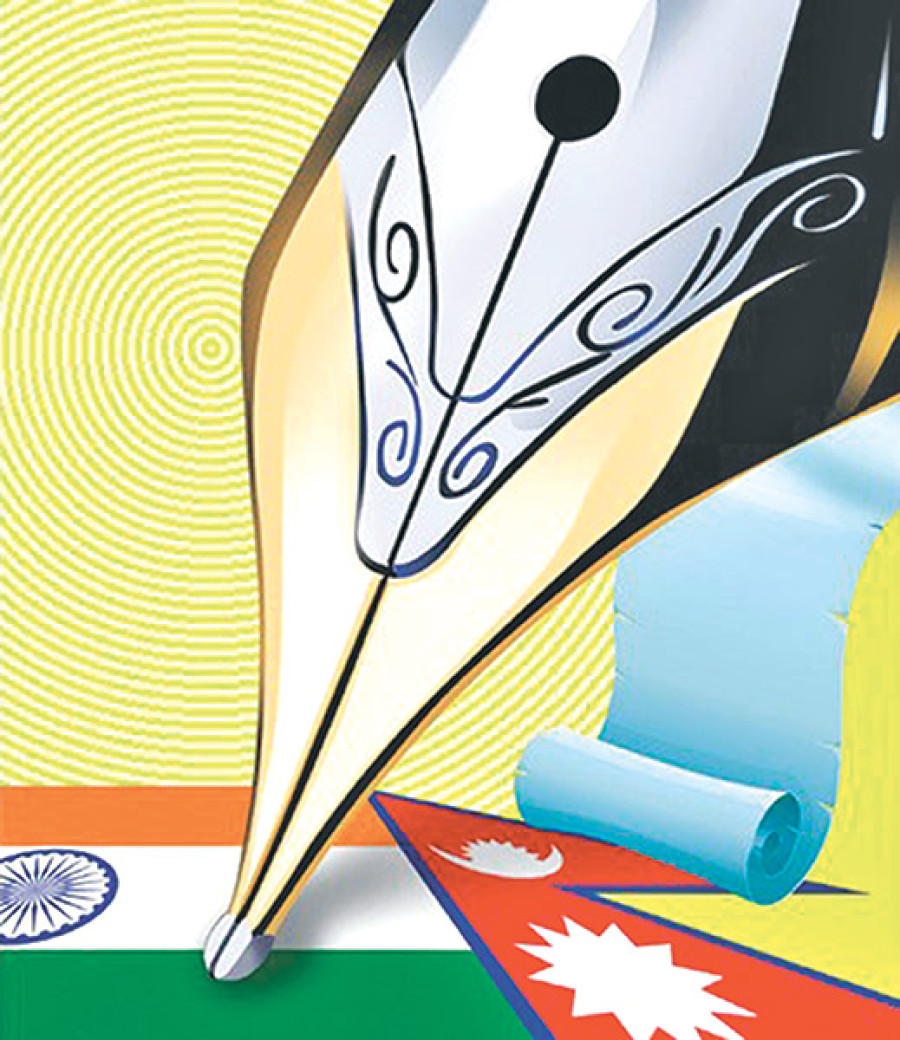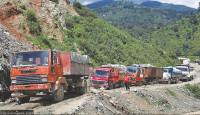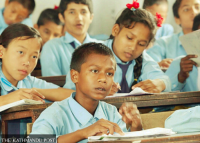Opinion
Assistance to inter-dependence
As Nepal entered into an era of planned development in 1955, it faced massive economic challenges from all fronts.
Mahendra P Lama
As Nepal entered into an era of planned development in 1955, it faced massive economic challenges from all fronts. The Rana regime had shattered the socio-economic fabric of the nation to such an extent that almost all the economic and social institutions had crumbled and become redundant. Infrastructure was in nascent stage.
The nation needed a new thinking, both in terms of political orientation and economic resolutions. Nepal desperately required foreign economic assistance, both to bridge the foreign exchange gap created by huge imports and trade deficit and the resource gap triggered by poor savings and bourgeoning investment requirement. The India-Nepal Peace and Friendship Treaty was signed in 1950 and India emerged as the first major donor country with three crucial components—grants, loans and technical cooperation.
Nepal and India then devised three modes of executing the aid projects. The directly executed projects included the Trisuli Hydel project, the Siddhartha Highway and the East-West Highway (Eastern Sector). The jointly executed projects included horticul¬ture, construction of hospitals and Tribhuvan University. The projects executed by His Majesty’s Government included remote area development schemes, Panchayat development and small scale industries etc. The Indian Aid Mission was set up in 1954 which was later renamed as the Indian Cooperation Mission. This institution was finally replaced by the Joint Commission in 1988 with three sub-commissions on water resources, trade and transit and economic and industrial cooperation.
Indian bilateral assistance
India gradually emerged as the foremost source of bilateral economic assistance contributing almost 57 percent of the total bilateral aid of Rs967 million in the third plan (1965-70). India and Nepal witnessed newer vistas of cooperation across various sectors and geographies varying from roads to communications; education to health and industrialisation to water resources development. A range of road projects that included the Tribhuvan Highway and an array of communication projects like airports at Gauchar in Kathmandu, Biratnagar, Janakpur, Simra, Bhairawa and Pokhara and railway lines like Janakpur, Sirsiya (Birgunj)-Raxaul and others were done with remarkable finesse.
General and Foreign Post Office and radio telephone, tele-printer, overhead trunk telephones, telegraph and telex circuit and coaxial cable links and East West Optical Fibre Project were topped by grand social sector projects like university buildings, archives and hostels, libraries and laboratories in Tribhuvan University. Polytechnics in Biratnagar, Hetauda, Makwanpur and drinking water supply projects in Birgunj, Amlekhganj, Biratnagar, Janakpur, Pokhara and Sundari Jal in Kathmandu provide a glimpse of the versatility of India’s initial development partnership in Nepal.
New cross-border infrastructure
In health care, BP Koirala Institute in Dharan and hospitals in Kailali, Rajbiraj, Dhangadi, Taulihawa, Ilam and Gulmi and Krishnanagar are some of the effective development interventions. India’s contributions include industrial estates at Patan, Nepalgunj and Dharan, a cement plant at Udaipur and a paper plant in far western Nepal-not to mention joint ventures in hotels, exploration of minerals, mining and manufacturing of refractories, vegetable ghee, dry batteries, beer, among other sectors. Some of the well known Indian industrial houses like Oberoi Hotels, ITC Ltd, Carbide India, Mohan Meakins, Dabur and others figured in these ventures. In the crucial water resources development front, projects like Koshi, Gandaki, Trisuli, Pokhara, Devighat were some remarkable as well as controversial learning curve examples of development partnerships.
During 1951-1990, almost 57 percent of India’s grants were allocated to roads and airports and over 28 percent to irrigations, power and water supply. Once Nepal witnessed multi-party democracy, India introduced a changed mode of economic assistance and started doing some attractive projects like Trauma centre at Bir Hospital. Under the micro level direct interventions initiated in 2003 India was allowed to independently decide ‘small projects’ worth Rs30 million each and execute them without going through regular administrative processes. Since then India has used over Rs 10.85 billion to implement over 500 Small Development Projects.
Newer variety of cross border infrastructure projects like 400 KV Muzaffarpur-Dhalkebar electricity transmission line and proposed Amlekhgunj-Pathlaiya cross border oil pipeline have started happening. Though Nepal’s weak absorptive capacity including low savings and investment, fragile administrative and development organisation and serious topographical and human resources constraints slowed down the disbursal of foreign economic assistance, India’s development participation did make a major difference to its economic development process.
Changing contexts
The entire context of official development assistance has changed. It is unlike what the Pearson Commission in 1969 and the Brandt Commission in 1980 recommended in the context of North-South negotiations. It is even unlike what the South Commission headed by Julius Nyerere and Manmohan Singh recommended for South-South Cooperation in 1990. Nepal’s needs have undergone massive structural changes triggered by the aspirations of a new generation, opening to the global world with modern communication facilities and, more critically, due to far reaching political changes within Nepal.
The participation by huge varieties of multilateral agencies and non-governmental actors with diverse functional principles and development actions makes Nepal rather a complex and challenging development constituency. The longitudinal profile of NGOs’ growth in Nepal provide a distinct and amazing narrative on their working style, sectoral coverage and their access to and deeper influence on governmental policy making system.
What is happening around and within Nepal in terms of gigantic cross regional connectivity projects under India’s Act East Policy and China’s Belt and Road Initiatives could change the entire orientation of an ‘erstwhile’ landlocked country. Nepal has to renegotiate its historical equidistance philosophy based strategic posturing with a more radical and practically gainful repositioning.
Institutions
It is in this context, India’s pivotal development partnership once again becomes both critical and inevitable. India has to consciously move from its conventional economic assistance role to generating adequate bilateral space for inter-dependence. Here Nepal becomes a partner and not a hapless recipient. In doing so, India has to put its best foot forward where it has the maximum and unparallel experimentation and strength. Supporting Nepal in creating and building institutions and their paraphernalia are the most crucial arena of interference. These institutions should include infrastructure related to the new federal units in terms of governance, revenue and income generation, employment creation and more critically building and management of basic public amenities like roads, communications, energy needs and water and environmental sanitation.
While deepening and widening this institution building process, India’s major foray should be in innovation back up and technology transfer, multi-disciplinary dialogues, educational and technical institutions, local and global migration management and skills and capacity building. It should also aim at making Nepal the fountain head of climate change knowledge when it comes to the ecology of hills and mountains, and its impacts like on hydropower, tourism, mountain bio-diversity, disaster management and agriculture heritage.
Common market
Can India think of far reaching institutional architecture, such as creating a common market between India and Nepal? Can it also link this with both bilateral and global connectivity and investment projects? Can India formally include Bangladesh, Bhutan and Nepal in its Act East Policy and give them unhindered access to South East Asia through its North Eastern Region? The question is whether, in order to safeguard each other’s national interests, these two countries can devise, float and practice a ‘smart border’ where all the movement of goods, services, people, technology and finance are recorded and regulated yet the finer nuances of historically tested open borders are kept intact.
India and Nepal have to think big and beyond their bilateral chicaneries. They have to act bold and transform their attitudes to actually enter into a ‘special relationship’. The older parameters, traditional variables and institutional thinking of the ‘special relationship’ are now outdated and ineffective. They have in fact become irritants and stumbling blocks in the designing of 21st century relationship.
Lama is a High End Expert in Institute of South Asian Studies, Sichuan University in China and a Member of the Eminent Persons Group on Nepal-India Relations from India




 24.12°C Kathmandu
24.12°C Kathmandu










